Graben is a pedestrianized shopping street in the center of Vienna. The stately buildings along Graben and neighboring Kohlmarkt are home to upscale stores. A monument at the center of Graben commemorates the end of the 1697 plague.
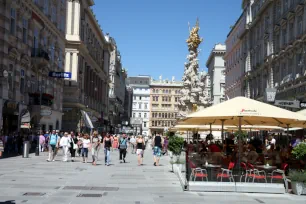
The street was created at around 1220, when duke Leopold VI expanded the town and had the moat, which dated back to the Roman era, filled in. Hence the street’s name, which can be translated to ditch or trench. Most of the buildings on Graben date back to the early nineteenth century, when the street was widened.
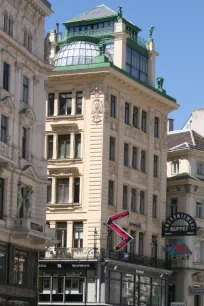
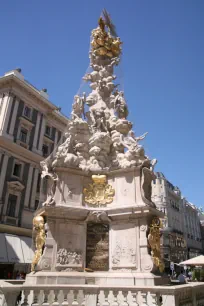
Architecture
Graben is lined with some beautiful buildings in a variety of architectural styles. At no. 11 is the Baroque Bartolotti-Partenfeld palace, designed by court architect von Hildebrandt. There are several Jugendstil buildings, such as the Ankerhaus at no. 10, designed by Otto Wagner. The nearby house at no. 13 with a black marble facade was designed by Adolf Loos, a modernist architect better known for his Looshaus at Michaelerplatz. Even more modern is the facade of no. 26, designed in the early 1970s by Hans Hollein.
Pestsäule
At the center of Graben stands the Pestsäule (Plague Column), also known as the Dreifaltigkeitssäule (Trinity Column).
Construction of the column was commissioned by Emperor Leopold I. During the terrible plague epidemic of 1679, which cost an estimated 100,000 lives, the desperate emperor prayed for help and vowed he would erect a memorial at the end of the epidemic. That same year, a large cross was erected, later replaced with the current bombastic monument.
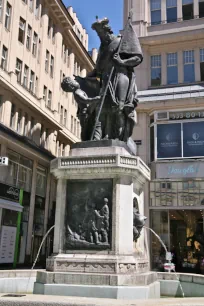
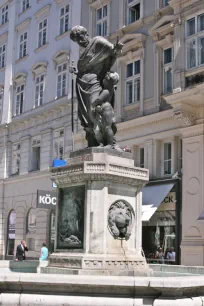
The monument was created between 1682 and 1692 to a Baroque design attributed to Johann Bernhard Fischer von Erlach, one of Austria’s most renowned architects. He sculpted six statues; others were created by Lodovico Burnacini and Paul Strudel.
The column’s central sculpture group shows allegorical figures depicting Faith defeating the Plague. Below is a statue of a praying emperor. The gilded sculpture group at the top represents the Holy Trinity, seated on a cloud. The monument is decorated with numerous statues of angels.
Fountains
There are two fountains at Graben, one on either side of the Pestsäule. The fountains, named Josefsbrunnen and Leopoldsbrunnen, are dedicated to two saints, St. Joseph and St. Leopold respectively. The statues on the fountains were sculpted in the eighteenth century by Johann Martin Fischer, but the fountains are much older, possibly from the sixteenth and seventeenth centuries.
Shopping
Graben is at the heart of Vienna’s most famous shopping streets. The adjoining Kohlmarkt, which leads to the Hofburg at Michaelerplatz, is even more exclusive. Demel, one of Vienna’s most famous cafés, is located in this pedestrianized street. The most popular shopping street in the center of Vienna, Kärntner Straße – also pedestrianized – starts at the other end of Graben.
- Next: Ringstraße
- More Sights & Attractions in Vienna

